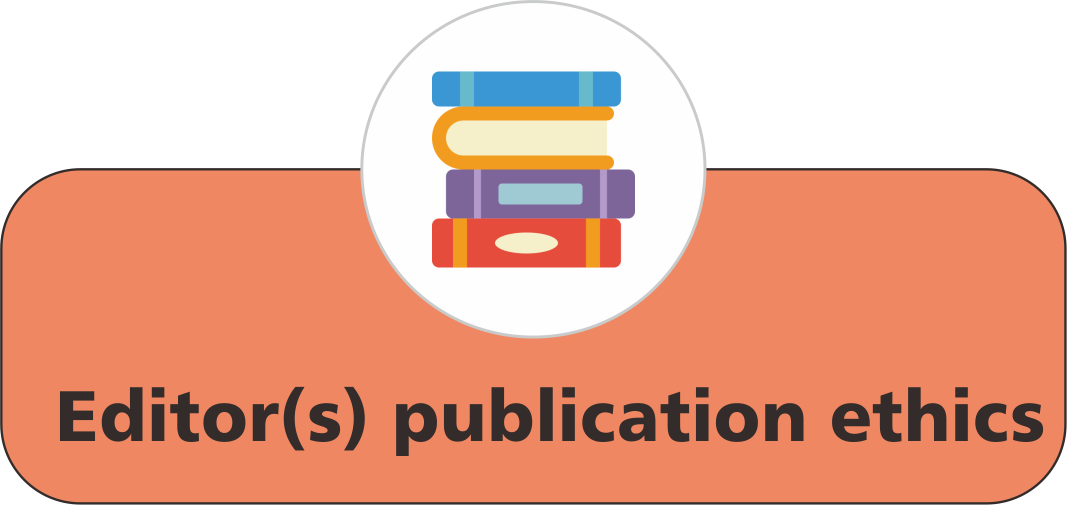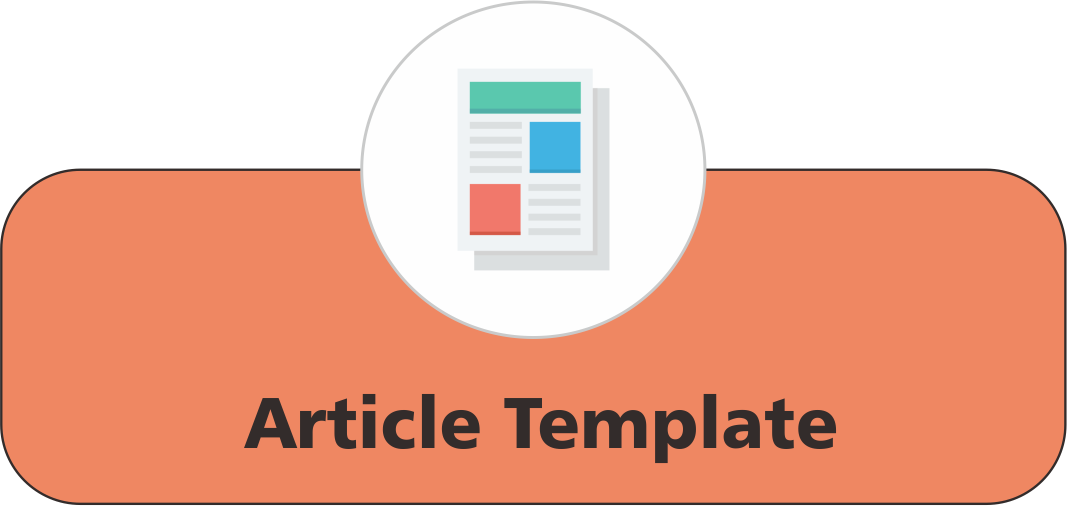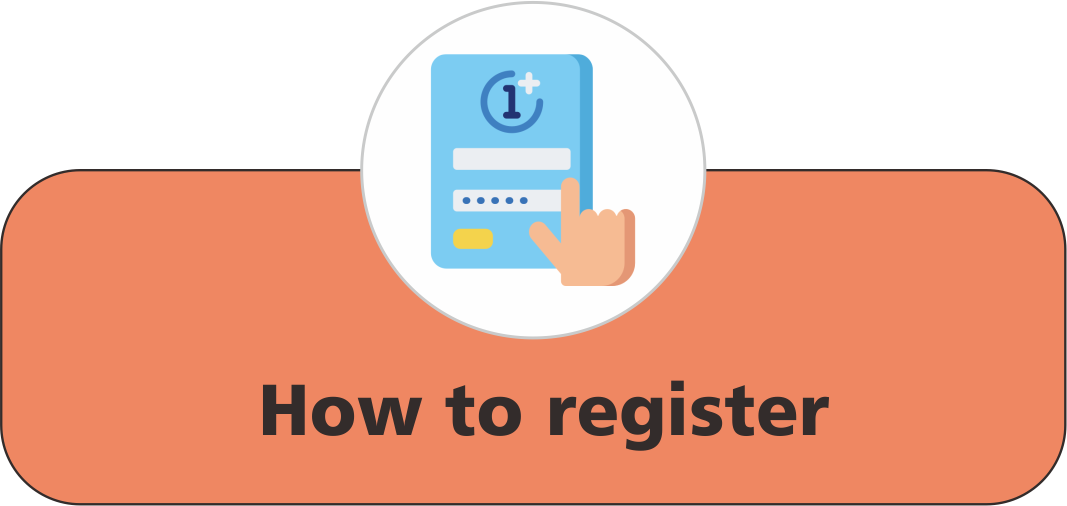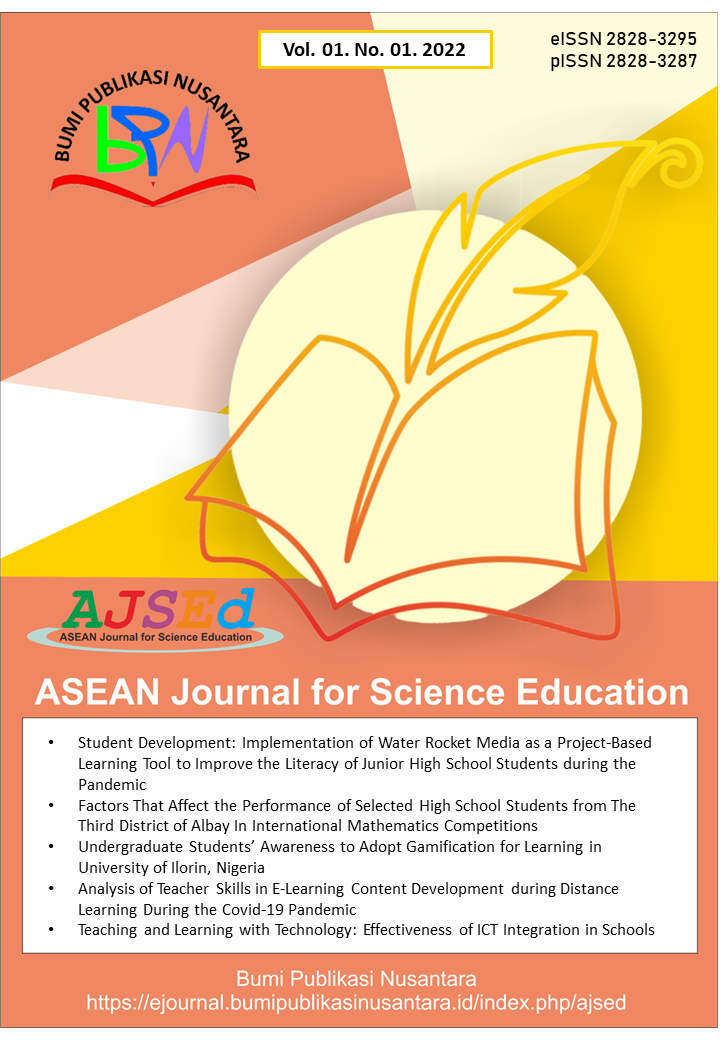Perceptions of Senior High School Science, Technology, Engineering, and Mathematics (STEM) Students Toward STEM and Non-STEM Courses: A Comparative Qualitative Study
 ), James Emmanuel A. Dupitas(2), Andrea Marie C. Cajandig(3), Bon Andrei A. Cuba(4), Anamarie G. Valdez(5), Jeeb T. Abelito(6), April Mae A. Marcella(7),
), James Emmanuel A. Dupitas(2), Andrea Marie C. Cajandig(3), Bon Andrei A. Cuba(4), Anamarie G. Valdez(5), Jeeb T. Abelito(6), April Mae A. Marcella(7),
(1) Sultan Kudarat State University
(2) Sultan Kudarat State University
(3) Sultan Kudarat State University
(4) Sultan Kudarat State University
(5) Sultan Kudarat State University
(6) Sultan Kudarat State University
(7) Sultan Kudarat State University
 Corresponding Author
Corresponding Author
Abstract
Keywords
References
Al Hamad, N. M., Adewusi, O. E., Unachukwu, C. C., Osawaru, B., and Chisom, O. N. (2024). A review on the innovative approaches to STEM education. International Journal of Science and Research Archive, 11(1), 244-252.
Anito Jr., J. C., and Morales, M. P. E. (2019). The pedagogical model of Philippine STEAM education: Drawing implications for the reengineering of Philippine STEAM learning ecosystem. Universal Journal of Educational Research, 7(12), 2662–2669.
Austin, A. E. (2002). Preparing the next generation of faculty: Graduate school as socialization to the academic career. The journal of higher education, 73(1), 94-122.
Birden, H., Glass, N., Wilson, I., Harrison, M., Usherwood, T., and Nass, D. (2013). Teaching professionalism in medical education: a Best Evidence Medical Education (BEME) systematic review. BEME Guide No. 25. Medical teacher, 35(7), e1252-e1266.
Bottia, M. C., Stearns, E., Mickelson, R. A., Moller, S., and Valentino, L. (2015). Growing the roots of STEM majors: Female math and science high school faculty and the participation of students in STEM. Economics of Education Review, 45, 14–27.
Christensen, R., Knezek, G., and Tyler-Wood, T. (2014). Student perceptions of science, technology, engineering and mathematics (STEM) content and careers. Computers In Human Behavior, 34, 173-186.
Dai, H. M., Ju, B., Teo, T., and Rappa, N. A. (2021). Understanding Chinese female university teachers’ intention to pursue a PhD degree: Some insights from a Chinese university. Higher Education, 81, 1347-1366.
Elbashir, A. M., Alkhair, S., and Al-Thani, N. J. (2024). Fostering STEM learning: exploring the integration of design thinking in Islamic STEM education. QiST: Journal of Quran and Tafseer Studies, 3(3), 411-432.
Fodor, J. A., and Pylyshyn, Z. W. (1981). How direct is visual perception?: Some reflections on Gibson's" Ecological Approach'. Selected Readings in the Philosophy of Perception, 167, 90009-3.
Ganley, C. M., George, C. E., Cimpian, J. R., and Makowski, M. B. (2018). Gender equity in college majors: Looking beyond the STEM/Non-STEM dichotomy for answers regarding female participation. American Educational Research Journal, 55(3), 453-487.
Gul, K. S., Kirmizigul, A. S., Ates, H., and Garzon, J. (2023). Advantages and challenges of STEM education in K-12: Systematic review and research synthesis. International Journal of Research in Education and Science, 9(2), 283–307.
Herschbach, D. R. (2011). The STEM initiative: Constraints and challenges. Journal of STEM Teacher Education, 48(1), 96-122.
Joseph, O. B., and Uzondu, N. C. (2024). Integrating AI and machine learning in STEM education: Challenges and opportunities. Computer Science and IT Research Journal, 5(8), 1732-1750.
Kim, A. Y., Sinatra, G. M., and Seyranian, V. (2018). Developing a STEM identity among young women: A social identity perspective. Review of Educational Research, 88(4), 589-625.
Korpershoek, H., Kuyper, H., Bosker, R., and van der Werf, G. (2013). Students leaving the STEM pipeline: An investigation of their attitudes and the influence of significant others on their study choice. Research Papers in Education, 28(4), 483-505.
Kunter, M., Klusmann, U., Baumert, J., Richter, D., Voss, T., and Hachfeld, A. (2013). Professional competence of teachers: effects on instructional quality and student development. Journal of educational psychology, 105(3), 805.
Ouyang, F., and Xu, W. (2024). The effects of educational robotics in STEM education: A multilevel meta-analysis. International Journal of STEM Education, 11(1), 7.
Polenova, E., Zinn, L., Vedral, A., and Brisson, L. (2018). Emerging between two worlds: A longitudinal study of career identity of students from Asian American Immigrant Families - Elena Polenova, Amie Vedral, Leanna Brisson, Leanne Zinn, 2018. Emerging Adulthood, 6(1), 53–65.
Shedlosky-Shoemaker, R., and Fautch, J. M. (2015). Who leaves, who stays? Psychological predictors of undergraduate chemistry students’ persistence. Journal of Chemical Education, 92(3), 408-414.
Shin, J. E. L., Levy, S. R., and London, B. (2016). Effects of role model exposure on STEM and non‐STEM student engagement. Journal of Applied Social Psychology, 46(7), 410-427.
Sithole, A., Chiyaka, E. T., McCarthy, P., Mupinga, D. M., Bucklein, B. K., and Kibirige, J. (2017). Student attraction, persistence and retention in STEM programs: Successes and continuing challenges. Higher Education Studies, 7(1), 46-59.
Sun, F., Tian, P., Sun, D., Fan, Y., and Yang, Y. (2024). Pre‐service teachers' inclination to integrate AI into STEM education: Analysis of influencing factors. British Journal of Educational Technology, 55(6), 2574-2596.
Tudor, J., Penlington, R., and McDowell, L. (2015). Perceptions and their influences on approaches to learning. Engineering Education, 5(2), 69-79.
Uddin, S., Imam, T., and Mozumdar, M. (2021). Research interdisciplinarity: STEM versus non-STEM. Scientometrics, 126, 603-618.
Wang, X. (2013). Why students choose STEM majors: Motivation, high school learning, and postsecondary context of support. American Educational Research Journal, 50(5), 1081-1121.
Xu, Y. J. (2013). Career outcomes of STEM and non-STEM college graduates: Persistence in majored-field and influential factors in career choices. Research in Higher Education, 54, 349-382.
Yeung, R. C. Y., Yeung, C. H., Sun, D., and Looi, C. K. (2024). A systematic review of Drone integrated STEM education at secondary schools (2005–2023): Trends, pedagogies, and learning outcomes. Computers and Education, 212, 104999.
Article Metrics
Abstract View : 2490 times
: 2490 times Download : 2324 times
Download : 2324 times
Refbacks
- There are currently no refbacks.
Copyright (c) 2025 Bumi Publikasi Nusantara

This work is licensed under a Creative Commons Attribution-ShareAlike 4.0 International License.







